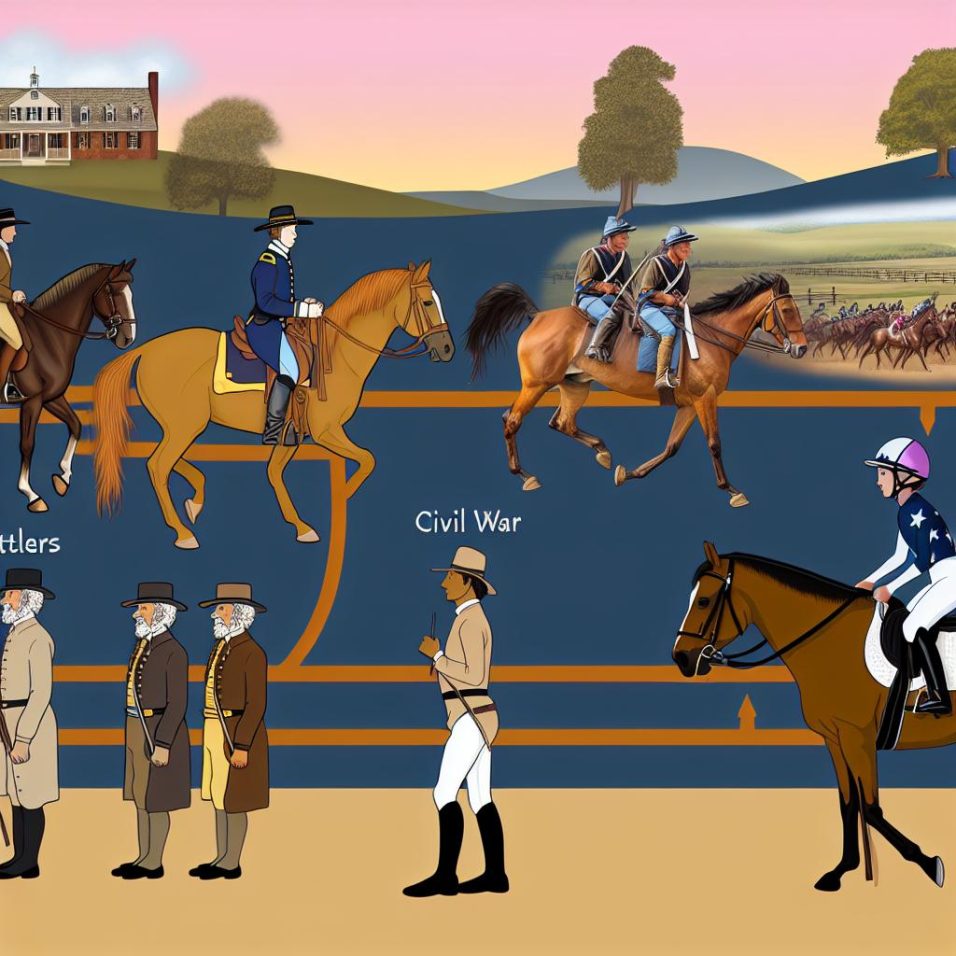The Early Introduction of Horses in Colonial Virginia
During the early 1600s, horses played an integral role in the European efforts to establish successful colonies on the American mainland. Spanish explorers, known for their skilled horsemanship, were among the first to introduce horses to the Americas. Yet, it was the English settlers who significantly increased the horse population in Virginia, recognizing the animals’ potential to fundamentally shape the colonial landscape. Horses became crucial for numerous practical functions, including transportation, agriculture, and trade, and their introduction marked the beginning of their profound impact on the region.
The Role of Horses in Tobacco Farming
With the rise of tobacco cultivation as the cornerstone of Virginia’s economy, horses became indispensable to farmers. The production of tobacco provided a lucrative income stream for many settlers, but it demanded intensive labor for activities such as plowing fields and transporting products. Horses, valued for their strength and endurance, became essential in fields where they plowed the soil, prepared it for planting, and helped navigate vast expanses of farmland. Additionally, they facilitated the transportation of harvested tobacco to local and distant markets, effectively connecting Virginia’s farms with lucrative trade networks. This early use of equine power laid the foundation for the subsequent transformation of Virginia’s agricultural sectors.
Horses in Colonial Society
Beyond their functional capacities in agriculture and trade, horses swiftly emerged as prominent fixtures in the social fabric of colonial Virginia. Owning horses soon became a status symbol, indicating wealth and prestige, especially among the gentry. Social events such as fox hunting became fashionable and were often accompanied by grand displays of horsemanship and lavish gatherings. These activities served not merely as entertainment but as expressions of social hierarchy and community cohesion. Horse racing, another culturally significant activity, gained tremendous popularity, capturing the attention of both participants and spectators and highlighting the horse’s evolving role in Virginia’s social and cultural realms.
Evolution During the Civil War Era
The Civil War was a pivotal event in Virginia’s history, reshaping not only the political landscape but also having a lasting impact on its equine population. Horses became indispensable resources for both Union and Confederate armies. They were crucial to cavalry units, providing mobility and strategic advantages on the battlefield. Beyond combat, horses served in logistical roles, facilitating communication and transportation of vital supplies, which underscored their utility even in wartime. However, the war also brought widespread destruction, depleting the horse population significantly. Consequently, the demand for strong and resilient breeds increased, as these were necessary to sustain military efforts and rebuild post-war society.
Modern-Day Significance of Horses in Virginia
In contemporary Virginia, the legacy of horses continues to be celebrated, reflecting a rich equine heritage that spans centuries. The state boasts numerous horse farms and hosts a plethora of equestrian events that draw visitors and participants from around the world. For instance, the Virginia Gold Cup, an esteemed steeplechase race, is emblematic of the state’s enduring passion for horse racing. Such events not only preserve historical traditions but also stimulate local economies and community engagement.
Modern initiatives aimed at conserving Virginia’s equine legacy have gained momentum. Organizations are actively involved in breeding programs and educational outreach to promote the prosperity of native horse breeds, as well as to enhance public awareness and appreciation for horses. The legacy of horses in Virginia is safeguarded through these concerted efforts, enabling a continuation of the state’s longstanding connection with these noble animals. Those interested in learning more about Virginia’s equine programs can refer to resources like the Virginia Horse Industry Board.
Conclusion
Horses have persistently shaped Virginia’s history, transitioning from essential agricultural aids in colonial times to icons of cultural sophistication and emblems of modern leisure. This journey illustrates not only the evolution of horses but also reflects broader historical and cultural shifts within the state. As Virginia progresses into the future, the bond with its equestrian legacy remains a deeply cherished aspect of its identity. Through the harmonious blend of tradition and modernity, Virginia’s connection with horses continues to offer unique insights into the state’s history and culture. The tale of horses in Virginia is a testament to their enduring influence and the mutual respect and admiration shared between humans and these remarkable creatures.


